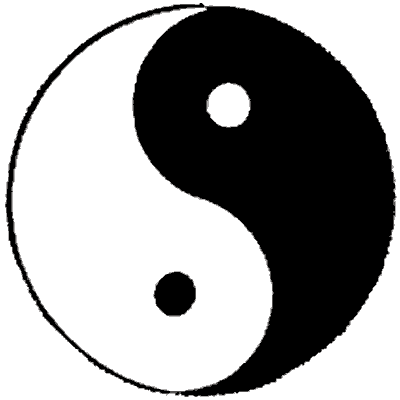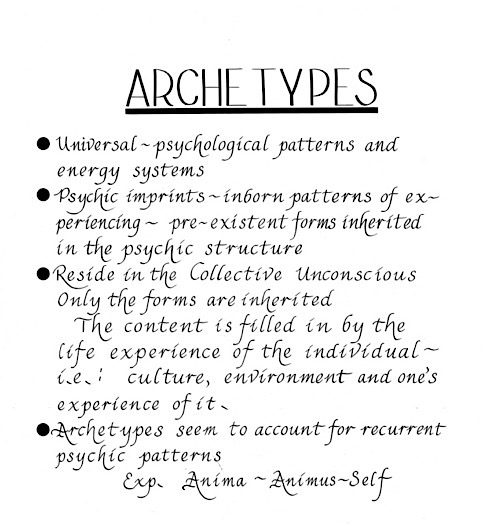
Wiccan Beliefs Towards Deity

In Wiccan belief the divine is ultimately seen as one. However, in general, Witches believe in the creative polarity of feminine and masculine principles in nature. They commonly think of deity as having a female and male aspect that exist together in a harmonious balance. These beliefs are evident in everything a Witch does. They inform the practice of magical arts and are to be seen in the way Witches set up their altar, carry out their rites and rituals, and celebrate the stage of the year.
Wicca's view of the balanced nature of deity stands in contrast to other religions that either play down or dispense with the female aspect entirely. This is to be found in many forms of Christianity, where little part is played by the female in its belief systems or its institutions, as well as other faiths such as Judaism. For Witches, the dynamic creative tension of female and male is part of what may be termed the general theory of polarity, where all things rely on opposites for their existence. The concepts of day and night, dark and light, content and form, positive and negative, attraction and repulsion, North and South, up and down, each need the other for the opposite to exist.
This Wiccan attitude can be expressed by referring to the Chinese concept of Yin and Yang. Yin is the female, negative, dark aspect of creation where Yang is the male, positive, light aspect. Together they make up a whole. It should be noted here that the terms "negative" and "dark" are not used in a derogatory sense. "Negative" should be seen in the same way as science refers to an electron having a negative charge and dark as merely the opposite of light; they are not value judgments. It will also be noticed that in the Yin-Yang symbol the black half contains a white dot and the white half a black dot, showing that in the female there is a part of maleness, and in the male there is a part of femaleness.
This interplay of energies at all levels, whether it be divine or earthly, ensures the cyclic flow of creation. Witches believe that over emphasis on one, at the expense of the other, will merely ensure sterility and stagnation. That said, the emphasis given to both Goddess and God varies in different traditions and their covens.

For Wiccans deity is immanent, meaning that it is to be found in all things and pervades existence. Quite literally, the Universe is perceived to be alive and the individual is but one cell in its enormous body. Everything is therefore sacred, and this gives Witches an enormous respect for all expressions of life. On the other hand, many Witches regard the ultimate nature of deity as unknowable, beyond all names and forms and, perhaps, beyond all mortal comprehension. In this respect, it is transcendent.
Generally, Witches believe that goddesses and gods are representative of certain kinds of energy within existence. It is the energies themselves that are perceived as being real. That they are clothed in the form of a goddess or god is a way of making them intelligible to the human mind. Why not, then, use the language of science to express these forces?
There are several reasons why Witches don't do this. On one level they feel that science only provides a partial answer to the question of existence, believing that there is much within the Universe that it knows nothing of. Further, the language of science, in its attempts to express these forces, is often incapable of speaking to the human soul (something that many scientists doubt exists anyway).
Our spirits thrive on the use of poetic and symbolic imagery that generally affects us in a more profound way than science ever can. You don't go to a manual on sex to learn about love - rather, you might read Shakespeare. Similarly, for questions of our purpose and meaning in life, you can't consult a book on biology and get an answer that satisfies the soul, however much it might please the intellect.
The fact is that many humans are genuinely deeply moved and motivated by the various images of a goddess and a god, and feel that they have come to a more profound understanding of existence because of them. Further, using such imagery makes the forces knowable to an extent and allows the individual to work with them in their life on the material plane.
Although not endorsed by every Witch, the gods and goddesses can, therefore, be seen to have an existence similar to the Jungian idea of the Archetype. For Jung the Archetypes were powerful symbols that had a genuine life. They existed in the human collective unconscious, independent of the individual mind, and could include god and goddess types [1].
Jung believed that these Archetypes could be worked with to have an effect in the everyday waking world. It would seem that the idea of deity is as old as the human mind itself and buried deep within all our psyches.

One of the key sources for modern Witchcraft is nineteenth century American folklorist, Charles G. Leland's, Aradia, Gospel of the Witches [4]. This work was used by Gerald Gardner as a foundation for his development of the Wiccan religion and led Doreen Valiente to declare that it was "probably the first major influence (on the lineage of modern Witchcraft) in relatively modern times" [5]. She was to take Leland's translation and use it as a source of inspiration for writing The Charge of the Goddess, which is one of the more important ritual constituents in traditional.
Wicca, based on a Gardnerian model. However, the work is not without controversy. Leland asserted that he had found a surviving Witch cult in the Tuscan mountains of Italy, near Siena, that he proposed had survived there from ancient times. He based his work on a manuscript known as the Vangelo delle Streghe (Gospel of the Witches) that he said had been given to him by a woman called Maddalena - whether this individual existed or not is a moot point. The Vangelo is widely considered to be fraudulent by modern historians, although whether Maddalena or Leland was the culprit continues to be debated [6]. However, all scholars agree that Leland's claims of an ancient lineage of Witchcraft have no basis in fact [7].
Wiccan attitudes about the work are varied. Some believe it to be true whilst others see that, while it may well be a forgery, this doesn't necessarily undermine its value as a creation myth or as a source for Wiccan rituals.
Although written in a naïve style, the Vangelo contains an allegorical creation story called How Diana Made the Stars and the Rain [8]. This can be interpreted in a variety of ways by different Wiccan traditions, and the student will likely want to explore this document and come to their own conclusions. For the moment though, I offer my own interpretation.
The Vangelo says:
"Diana was the first created before all creation. In her were all things".
This can be understood that in the beginning there was nothing and that from this state of non-being arose the One. This has resonance with Kabbalistic thought on nothingness and the appearance of a "concentration" or spark of energy, as well as the scientific theory of the Big Bang where a creative flash appeared from nowhere. Scientists believe this flash quickly developed into simple molecular structures such as Hydrogen; there were no stars and darkness reigned. Diana, or the Goddess, can be identified with this initial state, within which there is the potential for all things.
The Vangelo continues:
"Out of herself. She divided herself. Into darkness and light she was divided.
Lucifer, her brother and son, herself and her other half, was the light."
Scientists theorize that over aeons, gravity caused the simple atoms and molecules to clump together, and eventually form stars. For the first time, the Universe had light and darkness -and that light was borne from the dark. Furthermore, stars are now seen as the generator of all the other molecules in existence, for, when they explode, star-dust is created, out of which planets, and all living things, are formed. This passage is also reminiscent of the ideas of Yin and Yang, the cosmic feminine and masculine principles, whose polemic tension lies behind all creation. The state of the One became dynamic existence when divided into two forces. Diana was the darkness and Lucifer [9] (the God) was the light. This again tallies with the theories of the Kabbalists who posit that the One reflected upon itself to become the Two, and that this was the basis for creation.
The Vangelo goes on:
"And when Diana saw that the light was so beautiful, the light which was her
other half, her brother Lucifer, she yearned for it with exceeding great desire. Wishing to receive the light again into her darkness, to swallow it up in rapture, in delight, she trembled with desire. This desire was the Dawn. But Lucifer, the light, fled from her and would not yield to her wishes; he was the light which flies into the most distant parts of heaven, the mouse which flies before the cat."
This section perhaps shows that the Goddess, who represents the dark feminine Yin force of creation, wanted to experience the light masculine Yang force that the God represents. But she could not, for although the two forces were working closely together, Yin and Yang were not one. As a result of this, Diana consulted with the "fathers of the Beginning... [as well as] the mothers, the spirits who were before the first spirit, and lamented that she could not prevail with Lucifer".
She was advised that "to rise she must fall. To become the chief of goddesses, she must first become a mortal." If the Goddess wanted to be joined with the masculine forces of creation she had to enter into manifestation, for only here, on the Physical Plane, could the two forces be bound together and only here could the Goddess and God unite.
And so Diana took the form of a cat and manifested on the Material Plane to become as one with the God. At first Lucifer was angry, so to maintain this union of creative forces and his love "she hummed the song, it was as the buzzing of bees (or a top spinning round), a spinning wheel spinning life. She spun the lives of all men: all things were spun from the wheel of Diana. Lucifer turned the wheel."
Put another way, the God and Goddess worked together to maintain existence; she provided vibratory energy (the song), whilst he provided spinning motion by turning the wheel. They gave the Universe form and movement; the vibratory energy created the structures and was complimented by a spinning force, which maintained them and gave them movement. Therefore, the Goddess and the God together, can be seen to be the essential nature of existence.